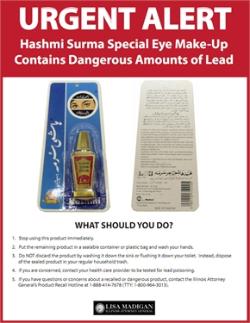Sources of lead poisoning
Lead was used for a long time to make many products. Laws now limit how lead can be used, but there are still lead hazards in and around many homes. Lead can be found in:
- Download: Diagram of Lead Sources

Dust
Lead dust is the most common way that children are exposed to lead. Inside the home, most lead dust comes from chipping and flaking paint or when paint is scraped, sanded, or disturbed during home remodeling. Chipping and peeling paint is found mostly on surfaces that rub or bump up against another surface. These surfaces include doors, doorframes, windows, stairs, railings, banisters, porches, fences, radiators, and pipes. Lead dust can also get into the air and settle onto other things when people vacuum, sweep, or walk through it.
Most young children are exposed to lead from lead dust. Children can swallow lead dust as they eat, play, and do other normal hand-to-mouth activities.
Folk medicines and cosmetics
Some folk medicines contain lead. Two examples are Greta and Azarcon. Azarcon is a bright orange powder also known as Maria Luisa, Rueda, Alarcon, and Coral. Greta is a yellow powder. Azarcon and Greta are used to treat an upset stomach. Pay-loo-ah also contains lead. It is a red powder used to treat a rash or a fever. Other folk medicines that contain lead include Bala (or Bala Goli), Golf, Ghasard, Kandu, Litargirio and some Ayurvedic medicines. Some cosmetics such as Kohl (or AlKohl), Kajal, Surma and Sindoor also contain lead. More recently, the Illinois Attorney General issued a statewide product alert for Hashmi Surma Special Eye Make-up because it contains especially high levels of lead.
 Household water
Household water
Homes built before 1986 often have lead pipes or older plumbing parts such as faucets and fittings that may contain lead. Older water well pumps made with brass or bronze parts may also contain lead. Copper pipes are now used in most homes, but lead solder may have been used to connect these pipes. While in 1986 and 1988 laws were passed to prevent the use of lead in pipes, solder, and other plumbing parts, some new brass faucets and fixtures, may still contain small amounts of lead. Lead is more likely to get into warm water that is soft or acidic.
Lead gets in the body when people eat or drink food or water with lead in it. Lead in drinking water is most harmful for babies who drink formula mixed with water containing lead.
Learn more about lead in drinking water.
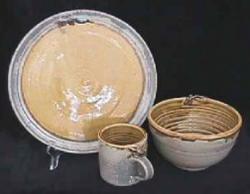 Lead-glazed ceramics, china, leaded crystal glassware
Lead-glazed ceramics, china, leaded crystal glassware
Lead may get into food and liquid that has been stored in lead-glazed ceramics, pottery, china, and crystal. Lead-glazed pottery usually comes from other countries. There is no way to accurately tell by just looking at a piece whether it contains dangerous amounts of lead. It is safest not to use items that may have been made with lead to store food or beverages. One can also purchase lead-testing kits (available in drugstores or by mail order). It is important to follow the specific instructions on the kit for an accurate reading. These readings, however, may not always be accurate.
Check the Consumer Product Safety Commission for the most recent information.
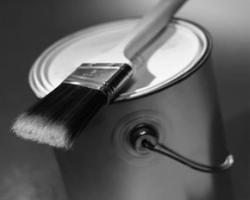 Paint
Paint
Lead-based paint is the most dangerous source of lead in the home. Lead dust is created from opening and closing the doors or windows inside a home painted with lead-based paint. A child is exposed to small amounts of lead when he or she puts his or her mouth on toys, food, or other objects covered in lead dust.
 Soil
Soil
Before 1986, companies added lead to gasoline. Lead particles escaped from car exhaust systems and went into the air and fell onto soil near roads. The lead is still there today and often at high levels.
Metal smelting, battery manufacturing, and other factories still use lead. This lead gets into the air and then mixes with the soil near homes located close to one of these sources.
Another source of lead in soil is flaking lead-based paint on the outside of buildings. Lead from paint chips and peeling paint can get into the soil close to buildings. This often happens during home remodeling if workers are not careful.
Children can be exposed to high levels of lead from soil when they put their hands or toys that have been in the soil into their mouths. They may also put plants and rocks in their mouths or eat the soil directly.
Learn more about Lead-Safe Yards.
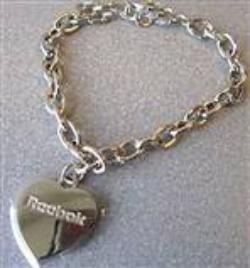 Toys and jewelry
Toys and jewelry
Despite Illinois laws prohibiting the use of lead in some products, manufacturers continue to produce toys, jewelry and candy that contain lead. Some of these products use lead paint while others are lead-filled, but all are dangerous to children.
Over 2 million children's products have been recalled because of lead paint, including toys and candy wrappers. Even though lead paint has been banned in the United Sates since 1978—and is banned in the use of consumer products under the Federal Hazardous Substance Act (FHSA)—of the 49 different categories of children's products recalled since 1990, 59% were recalled because of the presence of lead paint.
Children's toys and jewelry, including body piercing jewelry, may also contain "elemental lead." Currently, no regulations ban the use of lead, even in children's products. Instead, the FHSA bans toys and other products intended for use by children that contain a hazardous amount of lead that children can gain access to. Thus, a child's product can be made entirely of lead as long as it is covered with a protective coating that prevents the lead from becoming "accessible."
In 2003, over 152 million pieces of cheap jewelry sold in vending machines were recalled by the Consumer Product Safety Commission (CPSC) because the coating that was to keep the lead from leaking out proved ineffective. One 4-year-old child suffered from lead poisoning after accidentally swallowing a pendant bought for a quarter in a gumball machine.
In 2006, a small child swallowed a piece from an 8-inch long metal bracelet with a heart-shaped charm, which was a free gift with the purchase of various styles of children's footwear. The CPSC issued an immediate recall of the product, and instructed consumers to take the charm bracelet away from children and dispose of the entire bracelet. Unfortunately, even a small amount of lead that is ingested can cause irreversible damage. The CPSC urges all parents to search their children's toys for metal jewelry and throw it away.
To find out about the latest recalls, visit the Illinois Attorney General's Sign up for Safety website.
To sign up to receive email notifications of recalled children's products, visit U.S. Consumer Product Safety Commission (CPSC).
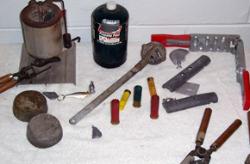 Workplace and hobbies
Workplace and hobbies
People exposed to lead at work may bring lead home on their clothes, shoes, hair, or skin. Some jobs that expose people to lead include home improvement, painting and refinishing, car or radiator repair, plumbing, construction, welding and cutting, electronics, demolition, municipal waste incineration, battery manufacturing, lead compound manufacturing, rubber products and plastics manufacturing, lead smelting and refining, working in brass or bronze foundries, and working with scrap metal. Some hobbies also use lead. These hobbies include making lead-glazed pottery and stained glass, fishing with leaded sinkers, and refinishing furniture.
 Other common sources of lead
Other common sources of lead
Antique pewter, curtain and window weights, crayons from other countries, some colors of ink, some calcium supplements, old playground equipment, fishing weights or sinkers, wheel weights, bullets and hair dyes may also contain lead.
- Food cans: In 1995 the United States banned the use of lead solder on cans. But lead solder can still be found on cans made in other countries that are sold in the U.S. These cans are usually made from three pieces soldered together. The cans usually have wide seams. The silver-gray solder along the seams contains the lead. Cans containing lead may be imported into the U.S. and sold. Over time, the lead gets into the food. This happens faster after the can has been opened. Foods that are acidic are more likely to absorb lead.
- Other food items: Many commonly found treats may contain lead. There are some candies from Mexico that contain lead.
- Mini-blinds: Some non-glossy, vinyl mini-blinds from other countries contain lead. To detect lead, purchase a home testing kit (available in hardware stores or by mail order/online.) It is important to follow all testing kit instructions, and note that some testing kits' results may not be accurate.
Check the Illinois Attorney General's website for more recent updates.

